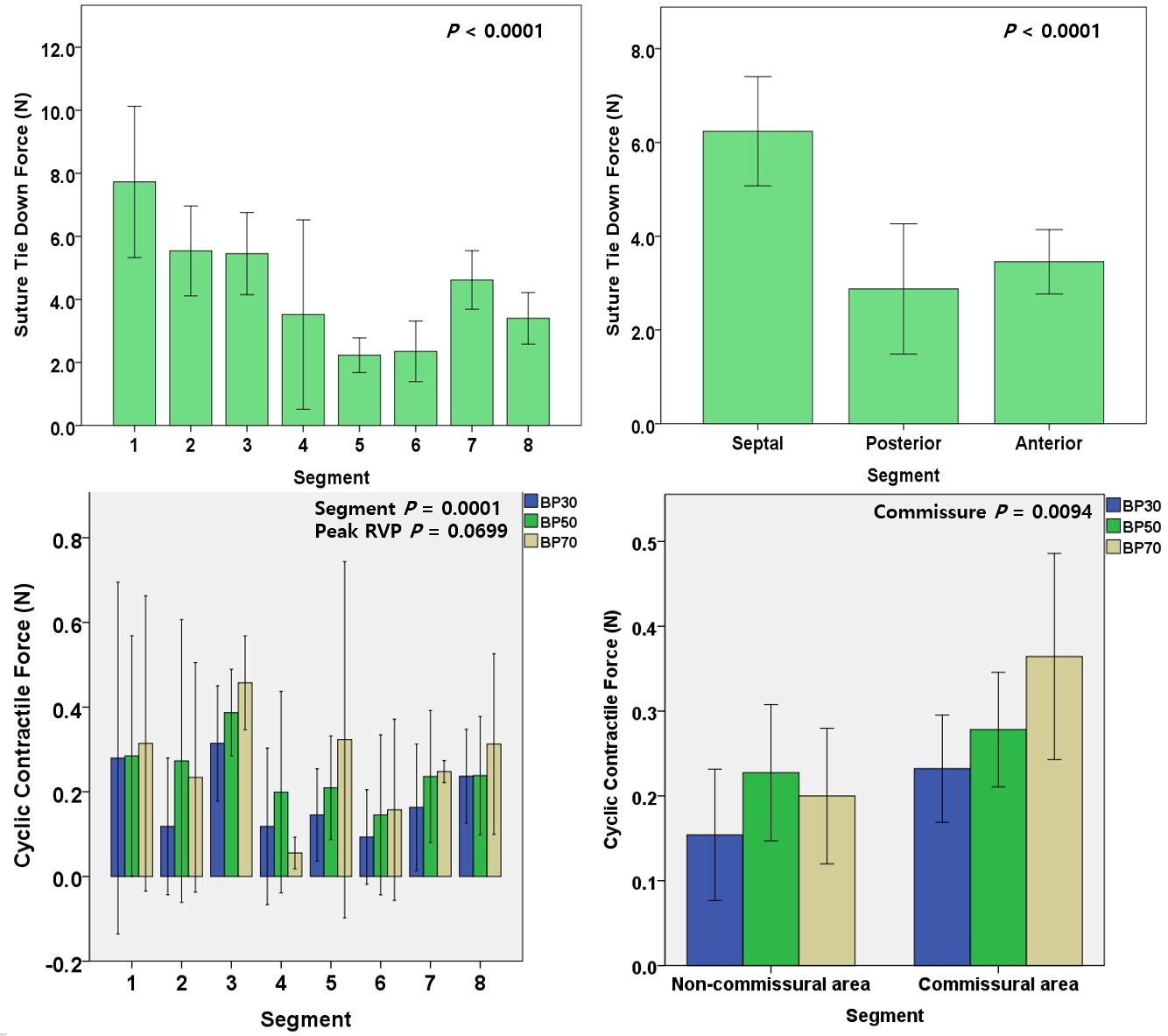초록접수 현황
| 20F-108 | 구연 발표 |
Suture Tie-Down Forces and Cyclic Contractile Forces After an Undersized Tricuspid Annuloplasty Using Three-Dimensional Rigid Ring: Ovine Model Experiment
Jae Hong Lim, MD1*, Heean Shin, BS2*, Dong Ah Shin, BS2, Dae Hyun Kim, MD3, Suk Ho Sohn, MD3, Jae Woong Choi, MD3, Sungkyu Cho, MD3, Hee Chan Kim, PhD 4,5, Ho Young Hwang, MD, PhD3
1Department of Thoracic and Cardiovascular Surgery, Sejong General Hospital, Bucheon, Kyeong gi-do, Republic of Korea
2Interdisciplinary Program in Bioengineering, Seoul National University, Seoul, Republic of Korea
3Department of Thoracic and Cardiovascular Surgery, Seoul National University Hospital, Seoul National University College of Medicine, Seoul, Republic of Korea
4Department of Biomedical Engineering, Seoul National University College of Medicine, Republic of Korea
5Institute of Medical & Biological Engineering, Medical Research Center, Seoul National University, Seoul, Republic of Korea
Purpose : This study was conducted to measure suture tie-down forces and to evaluate cyclic contractile forces (CCF) in beating hearts after undersized 3D rigid ring tricuspid annuloplasty (TAP).
Methods : Eight force transducers were attached to the 3D rigid TAP ring. Segments 1 to 8 were attached from the mid-septal to anterior-septal commissural area in a counterclockwise order. Two size-downed ring TAPs were performed in 6 sheep. Tie-down forces and CCF were recorded and analyzed at 8 annular segments and at 3 levels of peak right ventricular pressure (RVP: 30, 50 and 70mmHg).
Results : Overall average tie-down forces and CCFs were 4.34±2.26 N and 0.23±0.09 N, respectively. The tie-down force was highest at mid-septal annulus (segment 1; 7.67±2.33 N) and lowest at antero-posterior commissure (segment 5; 2.23±0.53 N, P = 0.001). The CCF at RVP of 30mmHg was higher at 3 commissural area (segments 3, 5 and 8) than the other segments. The increases of the CCFs following changes in RVP were statistically significant only at the 3 commissural area (P = 0.0119). However, mean CCFs remained low at all annular positions (ranges of average CCF = 0.06N - 0.46N).
Conclusion : The risk of suture dehiscence after down-sized 3D rigid ring TAP might be minimal because the absolute forces remained low in all annular positions even in the condition of high RVP. However, careful apply of sutures might be warranted at the septal annular area and commissures to prevent annular tear during the down-sized 3D rigid ring TAP.
Methods : Eight force transducers were attached to the 3D rigid TAP ring. Segments 1 to 8 were attached from the mid-septal to anterior-septal commissural area in a counterclockwise order. Two size-downed ring TAPs were performed in 6 sheep. Tie-down forces and CCF were recorded and analyzed at 8 annular segments and at 3 levels of peak right ventricular pressure (RVP: 30, 50 and 70mmHg).
Results : Overall average tie-down forces and CCFs were 4.34±2.26 N and 0.23±0.09 N, respectively. The tie-down force was highest at mid-septal annulus (segment 1; 7.67±2.33 N) and lowest at antero-posterior commissure (segment 5; 2.23±0.53 N, P = 0.001). The CCF at RVP of 30mmHg was higher at 3 commissural area (segments 3, 5 and 8) than the other segments. The increases of the CCFs following changes in RVP were statistically significant only at the 3 commissural area (P = 0.0119). However, mean CCFs remained low at all annular positions (ranges of average CCF = 0.06N - 0.46N).
Conclusion : The risk of suture dehiscence after down-sized 3D rigid ring TAP might be minimal because the absolute forces remained low in all annular positions even in the condition of high RVP. However, careful apply of sutures might be warranted at the septal annular area and commissures to prevent annular tear during the down-sized 3D rigid ring TAP.

책임저자: Ho Young Hwang
Department of Thoracic and Cardiovascular Surgery, Seoul National University Hospital, Seoul National University College of Medicine, Seoul, Republic of Korea
발표자: Jae Hong Lim, E-mail : stlim38@hanmail.net


